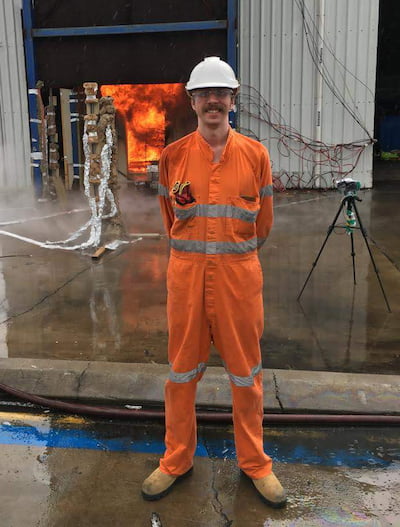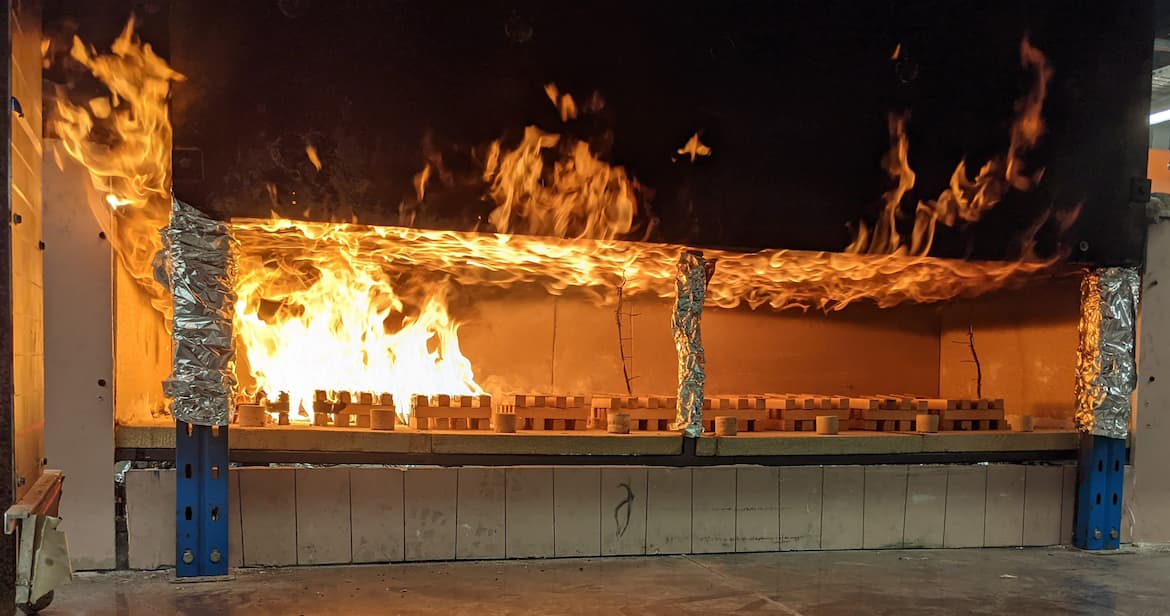
UBC Forestry warmly welcomes Dr. Felix Wiesner, renowned leader in sustainable timber engineering, to our Department of Wood Science as an Assistant Professor in Sustainable Timber-Built Environment – Fire Safety.
Dr. Wiesner is an expert in fire safety engineering, with a focus on the fire performance of timber buildings and infrastructure. He has extensive experience in large-scale compartment fire tests to assess the fire dynamics in engineered timber buildings and their structural response.
With a multidisciplinary lens and a global perspective, we are so excited to learn from Dr. Wiesner about the possibilities of engineered wood, and the future of the field in our interview below.
Tell us about yourself!
“I recently joined UBC Forestry as Assistant Professor for Fire Safety in the Sustainable Timber-build Environment. Previously, I worked at the University of Queensland as a Lecturer in Timber Engineering and was part of the Fire Safety Engineering Research Group. Before that, I completed my Master’s and PhD at the University of Edinburgh in Scotland.
Originally, I am from Germany, so I think it is fair to say that I have been around a bit. Outside of work I enjoy cycling, running, hiking and skiing. So far, it seems that I have come to a good place to enjoy these activities. On rainy days I like to make pizza and to relax with a good book or play board games with friends.”
Can you give us an overview of your research? What drew you to this work?

“I started my undergraduate degree in Civil & Environmental Engineering; this was at the University of Edinburgh, which has one of the oldest and best-developed fire safety engineering programs in the world. After getting exposed to fire safety engineering, I was drawn to its multifaceted approach and its many design aspects. I then changed my degree to Structural and Fire Safety Engineering, completed an internship for Arup, and completed my Master’s degree on the effect of localized fires on steel columns. I enjoyed it so much that I decided to also complete my PhD on it—this time on the structural fire safety of engineered timber, which was becoming increasingly popular but the fire safety aspects of it were not well defined or understood. I have worked with timber and its fire performance ever since.
My work with timber and fire safety has focused on multiple aspects: the fire dynamics (i.e. how long and hot a fire burns) in buildings with large amounts of timber, the structural behaviour of timber in fire (i.e. how long can timber carry load for during and after a fire), and the flammability of timber and wood products (i.e. how does the material ignite and how much heat will it contribute to a fire).”
Why is fire performance of engineered wood important in today’s built environments? What do you hope to see in the future for this field?
Engineered wood has the potential to significantly reduce the carbon footprint of the construction industry; after all, wood is a renewable material. However, the drive for sustainability cannot be allowed to compromise on building occupants’ rights to a safe environment to work and live in. Beyond the immediate life safety of occupants and emergency services, it is also important to consider property protection. A timber building that burns down during its design life will not be sustainable, plus the larger fuel load in timber buildings might affect adjacent property as well—past mass conflagrations of timber cities have significantly shaped our current building codes. It is not possible to prevent all fires, but it is important to design buildings to ensure that a fire does not cause the loss of life or the whole building.
Some fire testing methodologies are over one hundred years old, yet building design and materials have evolved significantly and these test methods are not always suitable for timber. A fire in an individual building is relatively rare. As a consequence, design flaws in the built environment are often only discovered years after a construction material and method have been established and, at this point, remediations will be costly. Therefore, fire safety engineering considerations must be considered in innovations in the built environment.
Ultimately, buildings should be designed holistically and fire safety has to work closely with other aspects of the design process. Even if you design a building to have exceptional fire performance, that won’t be good enough if the building experiences collapse or has to be demolished due to issues of durability.
One of the exciting aspects of working with engineered timber products is that they enable design interventions at the product level and the overall building design. For example, one of our recent research outputs has shown clearly how changing the adhesive and the way boards are configured in engineered wood wall panels can change the fire performance significantly. The need to consider design across multiple scales and disciplines makes fire safety for innovative timber products both challenging and exciting and highlights the need for innovative assessment methods and design solutions.

What are you looking forward to most here at UBC?
I am looking forward to working with diverse groups of people within the Faculty of Forestry and the Department of Wood Science. The faculty combines a wide range of research areas, and this opens up opportunities for multidisciplinary research. I feel like I learn something new about wood and forest science every day through my interactions with my colleagues.
I am really excited to work with my colleagues in the sustainable timber-built environment cluster where we combine expertise over a wide range of issues relevant to timber buildings. Through this, and the extraordinary leadership in BC on mass timber buildings, we will develop important research and teaching solutions for future timber buildings.
At the same time, I am looking forward to life on a great campus in a city full of beautiful sights and fun things to do.
Comments are closed, but trackbacks and pingbacks are open.